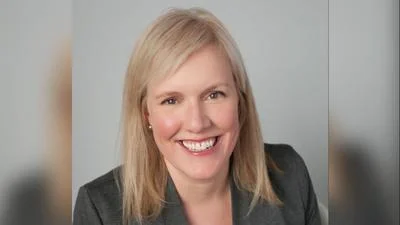U.S. Sen. Tammy Baldwin (D-WI) | Twitter/Sen. Tammy Baldwin
U.S. Sen. Tammy Baldwin (D-WI) | Twitter/Sen. Tammy Baldwin
U.S. Sen. Tammy Baldwin (D-WI) wouldn’t respond to questions about her position on the United State’s current inflation level following the approval of a multi-trillion dollar infrastructure plan in the House and rise in the consumer price index.
The Sconi first requested comment in August from Baldwin on the issue and again requested comment on Oct. 25.
Several indicators, such as the U.S. Consumer Price Index, show that inflation is affecting the prices consumers pay for goods and services.
In an Oct. 12 speech at the Peterson Center for International Economics, Atlanta Federal Reserve Chair Raphael Bostic was the first federal official to break with Fed leadership on inflation. He remarked that inflation will last longer than expected and should no longer be considered “transitory.”
Bostic added that he believes “the evidence is mounting that price pressures have broadened beyond the handful of items most directly connected to supply chain issues or the reopening of the services sector. If we scrutinize that report, we see that three-quarters of the CPI consumer market basket rose at rates higher than 3% during August.”
As a result, this justifies removal of the Fed's emergency monetary policy, he concluded.
Bostic is currently a voting member of the Federal Reserve’s monetary policy-setting Federal Open Market Committee, the body equipped to make such adjustments.
Jerome Powell, the Fed’s chairman, has repeatedly asserted that inflation is transitory due to post-COVID-19 reopening of the economy. As inflation grows, with a 5.4% CPI index increase in September, this assertion is growing harder to defend, according to Nasdaq.com. Powell, originally nominated by the Board of Governors and President Obama, maintains that the Fed has the tools to fight runaway inflation.
The products whose prices sparked inflation worries this summer were considerably cheaper in September. The goods and services that are normally volatile are fueling inflation now, according to Quartz. Inflation observers, including the U.S. Federal Reserve, expect prices to drop as the pandemic subsides, though that hasn’t happened as fast as expected.
President Biden announced a deal for the Port of Los Angeles to become a 24-hour, seven-days-a-week operation. The nighttime operations were arranged to help to break the logjam and reduce shipping delays for toasters, sneakers, bicycles, cars and more. Those logjams have been given partial blame for rising prices.
Prices have climbed by 5.4% since last year, the largest increase since January 1991, according to the September consumer price index report.
This meteoric rise was driven mainly by steep jumps in fuel, food and housing prices.
Citing Department of Labor statistics, CNBC reports that since last year, the price of gas has increased by 42.1%, rental cars by 42.9%, used cars by 24.4%, hotels by 18%, TVs by 12.7%, furniture by 11.2%, select grocery items by 10.5%, new cars by 8.2%, appliances by 7.1%, electricity by 5.2%, restaurant prices by 4.7%, and rent by 2.9%. At the same time, wages grew by just 4.6%, meaning that on average, Americans’ purchasing power has dropped significantly.
“The rise in shelter costs will exacerbate the negative financial impact so many households are feeling from higher prices,” Chief Bankrate Financial Analyst Greg McBride said.
The uptick in inflation also signals additional hardships Americans will have to face in the coming months, as real wages decline for most. As the weather cools and Americans are turning on their heating systems, remaining warm will be more costly this winter. The prices of natural gas and propane have increased by 89% and nearly threefold, respectively. Before Biden took office, according to realclearpolitics.com the United States was energy-independent, contributing to the low costs during the Trump years. Compared to September’s 5.4% year-over-year inflation rate, Trump left office with a 1.6% average in his final six months.
Consumers can also expect supply shortages of key items during the coming months. Consumer giants General Mills, Costco, and Nike have warned that on top of supply shortages, prices will remain high for consumers, CNBC reports.
“We’ve seen cost-of-good increases especially in apparel, also costs of inbound shipping with the costs of containers, increases with transportation, trucking to get into distribution centers,” Keith Jelinek, managing director of the global retail practice at consulting firm Berkeley Research Group, said.
He said only so much can be passed on to the consumer.
Sen. Joe Manchin (D-WV) has criticized the massive spending bill saying he would not vote for a reckless expansion of government programs. “Millions of jobs are open, supply chains are strained and unavoidable inflation taxes are draining workers’ hard-earned wages as the price of gasoline and groceries continues to climb,” he said, according to the New York Post.
West Des Moines' Jonathan Swenson, an institutional consulting director and private wealth adviser for Graystone Consulting, tweeted, "If one doesn’t eat, drink, drive, buy a car, buy a home, rent a home, furnish a home, buy clothes, send kids to school, send a package in the mail, own a pet, to name a few, you might not have much inflation in your cost of living."



 Alerts Sign-up
Alerts Sign-up